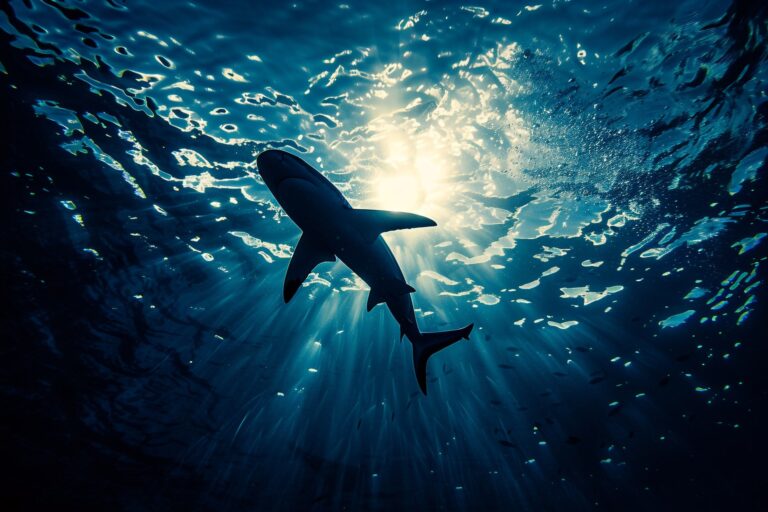By Courtney Cooper
How do Sharks See?
Sharks are one of the most feared predators in the ocean. With their highly developed senses, such as their ability to smell blood, they can hunt and kill their prey while remaining at the top of the food chain. Little is known about the shark’s sense of sight; in this blog we’ll explore how sharks see. We also discuss further shark facts that you might be interested in! Apex Shark Expeditions provides the best great white shark cage diving in Cape Town.
How Shark’s Eyes work
You’ll be surprised to know that the shark’s eye is not too different from us humans. They have a lens, cornea, pupil, retina, and iris. Their eyes are normally located on the sides of their head, resulting in 2 blind spots. The first blind spot is in front of its snout and the second is behind the top of its head.

It was previously thought that sharks are colour blind, however recent studies have shown that sharks are able to see in colour to a certain extent which can vary between species. Sharks have duplex retinas that consist of rods and cones. These rods and cones are the photoreceptor cells that distinguish light and dark (by using the rods) and colour (by using the cones). Scientists believe that some sharks can distinguish colours such as yellow, white and silver as these colours have been shown to attract their attention. This is why shiny and silver objects should be avoided when swimming in the ocean.
Sharks swim in all different types of oceans and therefore require their sight to adapt to different conditions. So how are sharks able to see in dark and murky waters? They have a special feature called tapetum lucidum which is a biologic reflector system made up of mirrored crystals that are located behind the retina. This system works by absorbing the light through the retina, it then reaches the crystals which results in the light being reflected onto the retina (which can resemble glowing eyes). By reflecting onto the retina, the shark is able to enhance its visual sensitivity at low light levels allowing them to see up to 10 times better than we can in murky, dark and even clear water.
All sharks have eye lids however, they don’t close fully. They use the water to cleanse their eyes and therefore do not need their lids as much as we do. The shark’s eyes are at risk of injury when mating, fighting over territory and when attacking their prey. It is crucial to their survival that they protect their eyes at all costs. There are 2 methods in which sharks protect their eyes, nictitating membrane, and ocular rotation.
Nictitating membrane is a protective transparent membrane layer that covers their eyeball when faced by a threat or when hunting. Not all sharks have a nictitating membrane, the Great White Shark must use ocular rotation, which is the rolling of the eyes back when attacking their prey. This motion occurs just before the attack and renders the Great White blind. The shark must now rely on its other senses, such as its electroreceptors to complete the attack.
Contrary to popular belief, sharks generally have good eyesight, to what degree, just depends on the shark species. Generally, sharks can only see up to 50 feet, coupled with their blind spots and limited colour vision, it’s easy to see how humans can be mistaken for seals or other prey.
If you enjoyed this article, you may also be interested in our other article, where we discuss the lifespan of sharks. Make your new year exciting. Book your Shark cage diving in Gansbaai.




